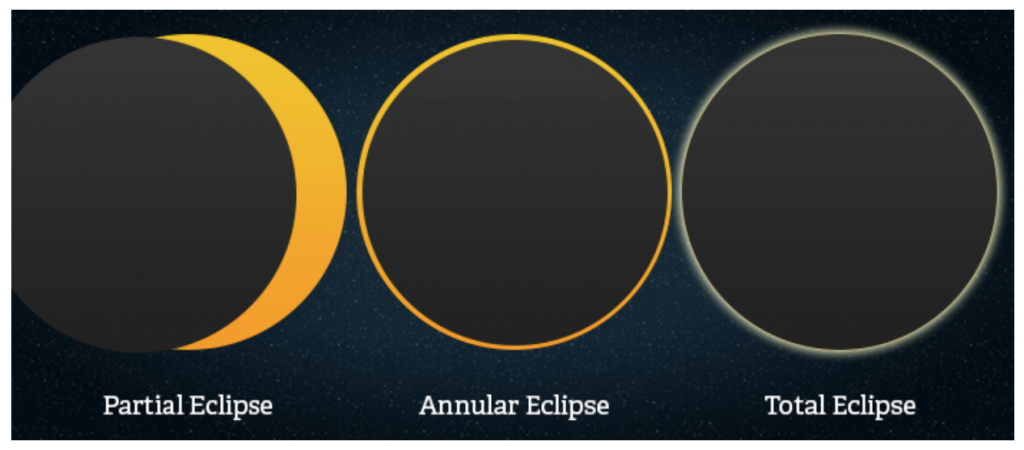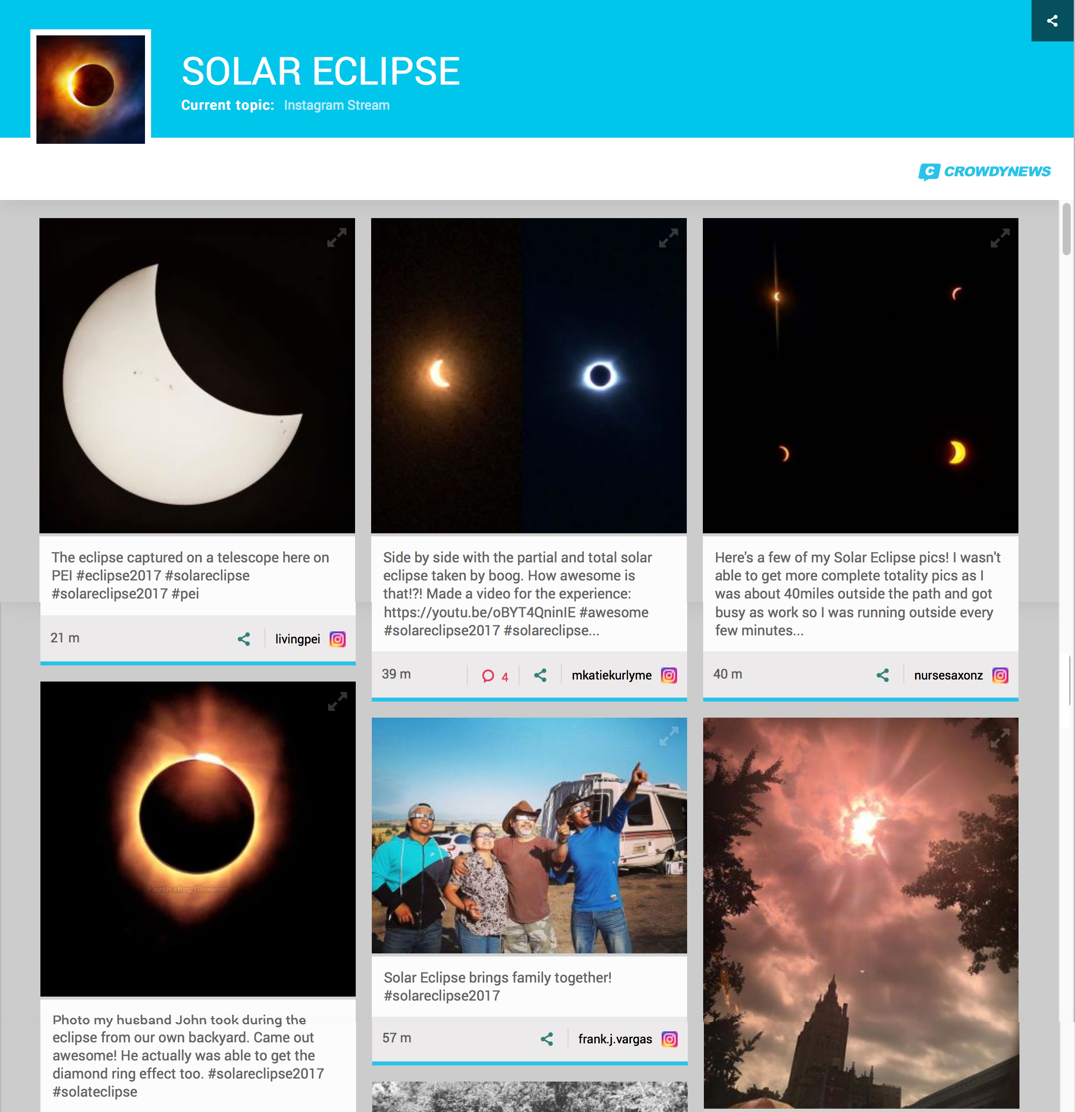Solar Eclipse Basics
- There are three different types of solar eclipses (3).

- Total solar eclipses cannot be seen from the North and South Poles (3).
- Almost identical solar eclipses happen every 18 years and 11 months (3).
- Depending on the geometry of the Sun, Moon, and Earth, there can be between 2 and 5 solar eclipses each year (5).
- A total solar eclipse can happen once every 1-2 years. This makes them very rare events (5).
- The width of the path of totality is usually about 160 km and can sweep across an area of Earth’s surface about 10,000 miles long (5).
- If any planets are in the sky at the time of a total solar eclipse, they can be seen as points of light (5).
- The 21 August event was the first total solar eclipse in the continental U.S. in 38 years. The last one occurred February 26, 1979 (1).
- A solar eclipse happens at New Moon.A New Moon occurs when the moon is between the Sun and Earth. The only lunar phase when that happens is New Moon (1).
- It is safe to look during Totality.During the time the Moon’s disk covers the Sun, it’s safe to look at the eclipse (1).
Solar Eclipse History
- Long, long ago. In ancient times, people thought an eclipse was a sign that the gods were angry or that bad things were about to happen (4).
- The word eclipse was used to describe this event as it is the Greek word meaning abandonment or downfall (3).
Solar Eclipse Impact
- Nature responds to the eclipse.Depending on your location, as totality nears you may experience strange things. For example,
- Shadows look different (1),
- Any breeze will dissipate (1),
- Birds will stop chirping (1),
- During a total solar eclipse, some animals tend to act confused or prepare for sleep (4),
- A 10°–15° F drop in temperature is not unusual (1),
- After a total solar eclipse, it takes about an hour before total day light is restored (4).
Solar Eclipse Future
- Stay tuned.The next total solar eclipse over the continental U.S. occurs April 8, 2024. Depending on where you are (on the center line), the duration of totality will last at least 3 minutes and 22 seconds on the east coast of Maine and stretche to 4 minutes and 27 seconds in southwestern Texas. After that eclipse, it’s a 20-year wait until August 23, 2044 (similar to the 1979 event, it will be visible only in Montana and North Dakota). Total solar eclipses follow in 2045 and 2078 (1).
- Total solar eclipses won’t be around forever. There will be no more total solar eclipses in about 600 million years, scientists say. Because of the moon’s slowly increasing orbit, NASA believes the moon will have moved far enough away from Earth in that timeframe that it will no longer be big enough to entirely cover the sun. “It will be too small in the sky,” said Dr. C. Alex Young, the associate director for science in the heliophysics science division at NASA’s Goddard Space Flight Center. The moon’s orbit is increasing by about 1.5 inches each year, Young added. The sun is also expected to expand slightly in the future but NASA has not yet seen a noticeable change, Young said. Partial eclipses will still exist in 600 million years (2).
Contact Crowdynews if interested in capturing an event through social media. To see all of the cool images shared on social media, see the Solar Eclipse social stream below:

Fun fact sources:
- http://www.astronomy.com/great-american-eclipse-2017/articles/2016/06/25-facts-about-the-2017-solar-eclipse
- http://time.com/4843775/total-solar-eclipse-2017-facts/
- http://space-kids.org/solar-eclipses/
- http://www.softschools.com/facts/space/solar_eclipse_facts/436/
- http://space-facts.com/solar-eclipse/